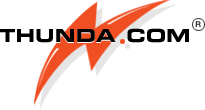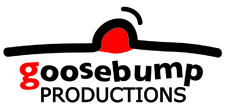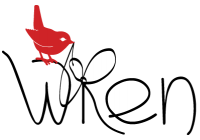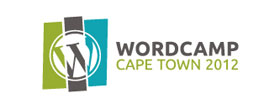 By day, I go by Matty. I’m a lead developer over at WooThemes, where I work predominantly with PHP and JavaScript. I keep a keen eye on all products released at WooThemes and have a strong focus on coding standards and best practices. While my background is in design and music, a strong love of code and web development captured my heart. I spend most of my time working on the engine that powers all themes at Woo, known as the WooFramework, as well as WooDojo and various other exciting WooProjects. Fueled by punk-rock and a love of guitars and good music… as well as coffee.
By day, I go by Matty. I’m a lead developer over at WooThemes, where I work predominantly with PHP and JavaScript. I keep a keen eye on all products released at WooThemes and have a strong focus on coding standards and best practices. While my background is in design and music, a strong love of code and web development captured my heart. I spend most of my time working on the engine that powers all themes at Woo, known as the WooFramework, as well as WooDojo and various other exciting WooProjects. Fueled by punk-rock and a love of guitars and good music… as well as coffee.
Session: Shifting the WordPress Mindset
Time: 15:45 – 16:10
Tell us more about how you became interested in WordPress, what about it drives your continued interest?
While working as a web developer building bespoke systems, I developed an interest in WordPress. After using WordPress for a few small projects and, subsequently, for my own blog, I fell in love and haven’t looked back since.
The underlying architecture of the core and the nature of the community and the wealth of ever-evolving knowledge resources make WordPress, for me, a source of never-ending ideas and learning opportunities.
Why did you decide to speak at WordCamp Cape Town?
I’ve wanted to speak at a WordCamp for a while, in fact. When I was asked to speak, I jumped at the opportunity to interact with the WordPress community in Cape Town and to embrace the platform for a discussion about where we, the community, can take WordPress in the present and future.
What is your talk going to be about?
I’ll be taking a retrospective look at where WordPress core, themes, plugins and services have come from, evolved into present day and where they could evolve to in future, with the community’s direction.
I’ll also be throwing in a few pointers on what to keep an eye out for when using themes and plugins, as well as a few geek references here and there.
What is the one thing you want people to walk away with from your talk?
We, the community, largely determine the direction in which WordPress evolves. If we have a need, and the need is large enough, either the community or the core team at WordPress responds to make the vision come true.
When it comes to open source, the door to the community is one of the most important doors to keep open… as it lets in the fresh air.
What is your favourite WordPress theme and/or plugin, and why?
This is quite a tough question.
In terms of themes, I’d say my favourites are _s (Underscores), Canvas and Scrollider. _s is a lean framework upon which to build bespoke themes. Essentially, it can be seen as a “1000 hour head start”, which is great.
Canvas is as much a passion project for me as it is for many of our WooThemes customers. Having been deeply involved in Canvas and it’s evolution, I enjoy constantly looking for ways to streamline the offering, as well as evolve the product to meet the feedback of it’s users.
Scrollider is relatively new to the scene, yet came out the gate at full speed. Along with a really carefully crafted design, Scrollider is bundled with a really neat featured slideshow on the homepage, which allows the content to scroll over it when scrolling the page.
While a relatively simple effect, the logic behind it is rather beautiful.
In terms of plugins, my favourites are WooCommerce, W3 Total Cache (if your server doesn’t have built in caching), Theme Check and Matty Theme QuickSwitch (one of my own, which I use every day).
I’m also a fan of the newly-released WooSlider plugin which has a long and bright future ahead of it.
Can you share one WP tip with us?
When in doubt, read the core code. If you can’t find your answer there, read it again.
What are you most looking forward to at WordCamp Cape Town 2012?
I’m really looking forward to interacting with everyone, meeting new people and discussing the evolution of the WordPress ecosystem.
Do you make money from WordPress?
Yes, I do.
Is WordPress an effective platform for getting your message across?
Watching Matt Mullenweg’s “State of the Word” each year is always a great recap for me. Matt tends to, in my opinion, bring everyone back to the point of WordPress- publishing.
As long as WordPress is chiefly focused on content management and elegance, I’ll be blogging.
Being that it is a content management system, I don’t foresee this changing any time soon 😉
Tell us about your experience working with Sucuri Security on code audits and reviews? It sounded like an intensive review from the blog post I read on WooThemes, what did you take away from this?
We are currently working with Sucuri Security, doing regular code reviews and audits of various areas of our code base at WooThemes (WooDojo, WooSlider, etc).
This process involves line-by-line code reviews by several parties, as well as detailed documentation of each area that could potentially use an adjustment. By the time the reviewed and audited code base is released, it has gone through several line-by-line reviews by teams located both internally at WooThemes and at Sucuri Security.
The team at Sucuri Security are great to work with and really know their stuff when it comes to web security.
WooThemes have released a few new plugins lately. Tell us about those?
At WooThemes, we’ve released several plugins to compliment our theme offering and to help WordPress users to refine their publishing experience. Several of these include WooDojo (a functionality suite for WordPress), WooSidebars (advanced sidebar customisation for WordPress) and WooSlider (the ultimate slideshow plugin for WordPress), along with WooCommerce.
WooDojo is a project developed by the core team at WooHQ in Cape Town. Having gone through months of planning and development, as well as days of user experience testing and refinement, WooDojo makes it really easy to load in any of the downloadable features on offer (donation forms, maintenance mode, launch pad, widget preview mode and more) or to use the existing bundled features (an advanced tabbed widget, social widgets for Twitter and Instagram, login page branding and more).
WooDojo has a neat API built into it for easily creating custom settings screens. These can be used to create bespoke solutions for customers of a small business, or to offer customers an easy-to-maintain solution for creating small plugins to offer features to customers.
WooSidebars is a fully-rewritten replacement of the Sidebar Manager from the WooFramework. Featuring advanced conditional options, it’s possible to override any registered widget area in the active theme if specific conditions are met (for example, customising the sidebar on a specific page, all posts, specific blog posts or WooCommerce products or categories).
WooSidebars doesn’t require any theme-related tweaks and can be used with any theme that supports dynamic sidebars (rather than just static HTML sidebars).
WooSlider is a lean and responsive slideshow creation plugin for WordPress. With several bundled slideshow types, a shortcode, a template tag and widgets for each bundled slideshow type, it’s possible to load a slideshow into virtually any area of your WordPress-powered website.
As with all WooThemes products, much planning and thought has gone into the user experience in WooSlider, to make creating and adding slideshows a quick and virtually effortless process.
While WooSlider’s core is lean, it provides an advanced Slideshows API for easily creating slideshows from custom content. There are further APIs in the pipeline to make it easy to gain maximum control over your slideshows and the features that you need to control, without adding bloat to the core code.
WooCommerce is the eCommerce plugin for WordPress that we all know and love. With an ever-growing catalog of extensions to suit virtually every need, and themes that support WooCommerce out of the box, eCommerce with WordPress has taken on a new face.
































Pingback: How has WordPress evolved as a business tool? | memeburn
Go Matt — pretty impressive and smart!